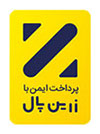This is the third post in my four-part A-B-C for parents in families with more than one language.
M is for Myths
There are so many myths about bilingual children and how to raise them that I don’t know where to start. In my opinion, the most damaging ones are:
1. that you confuse your children by having them learn two languages when they grow up – not true, millions of children have not only stayed completely normal, but thrived on becoming bilingual.
2. that bilingualism causes language delay – also not true, there might be a slight delay at the start of the journey when children are learning two vocabularies, but research has shown that bilingual children quickly not only catch up, but overtake monolingual children in linguistic ability.
In my book I will be listing dozens of other myths surrounding multilingual families.
N is for Native language
Preferably speak your native language with your child – this way your bond will be supported by the language which is closest to your heart. If both parents speak a minority language as their native tongue, then they can use the ‘Minority language at home’ strategy for bringing up bilingual children. The children will learn the majority language in due course and also have a solid base in the minority language. Having a good command of one language supports the learning of another.
O is for Open-mindedness
Learning early in life that one thing or phenomenon can have more than one name gives you a different perspective to the world. Bilinguals learn that something is not equal to what it is called; it can have several descriptions depending on who speaks. Researchers have found that bilingual children are more flexible and open-minded than monolingual children when it comes to new concepts.
P is for Positive feedback
Praise, praise and praise again. Children thrive on positive feedback – the better they feel about using your language, the more they want to learn and speak it. I know there are parenting aficionados that say we shouldn’t praise but only encourage our children, but I am not in that camp. When your children do something well, tell them – be it to do with your language or anything else. With this I don’t however mean that you should only ever say well done! – there will be times when you need to correct your children’s language.
Q is for Questions
Children ask a lot of questions – and I know it can sometimes be exhausting to answer your child’s Why? followed by another Why? and so on, but do take the time to respond. It is an excellent opportunity to bring in new vocabulary or start a wider conversation. If you do not have time to answer at that very moment, promise to speak about it later (and keep your promise!) By answering their questions when they are young, your children will feel comfortable turning to you with their worries at an age when you do really want them to do it.
R is for Reading
I can’t emphasise enough how important it is that you read to your children. Reading stories that you have created together is great fun. When you read the bedtime stories, not only do your children learn new words, but you create memorable moments. You also teach your children to love books from an early age – something that will benefit them greatly when they go to school.
S is for Strategy
There are three main approaches you can use to raise a bilingual child and it is recommended that you plan and decide on which one to go for:
One parent, one language – parents consistently speak different languages to the child. This can of course also be One person, one language, if some other person (for example a child minder or a grandparent) spends enough time with the child.
Minority language at home – both parents speak the minority language at home and the children learn the majority language from other sources, for example child minders, friends or at school.
Time and place – parents allocate a specific time when or place where to speak a certain language. It can also be a certain activity that the family regularly does together.
In my book I will be going into more detail about the different strategies.
The last part of the A-B-C, T-Z, will be posted in two days’ time. To read the previous parts go to A-F and G-L.
May the peace and power be with you.

 Persian
Persian  English
English  Arabic
Arabic 


